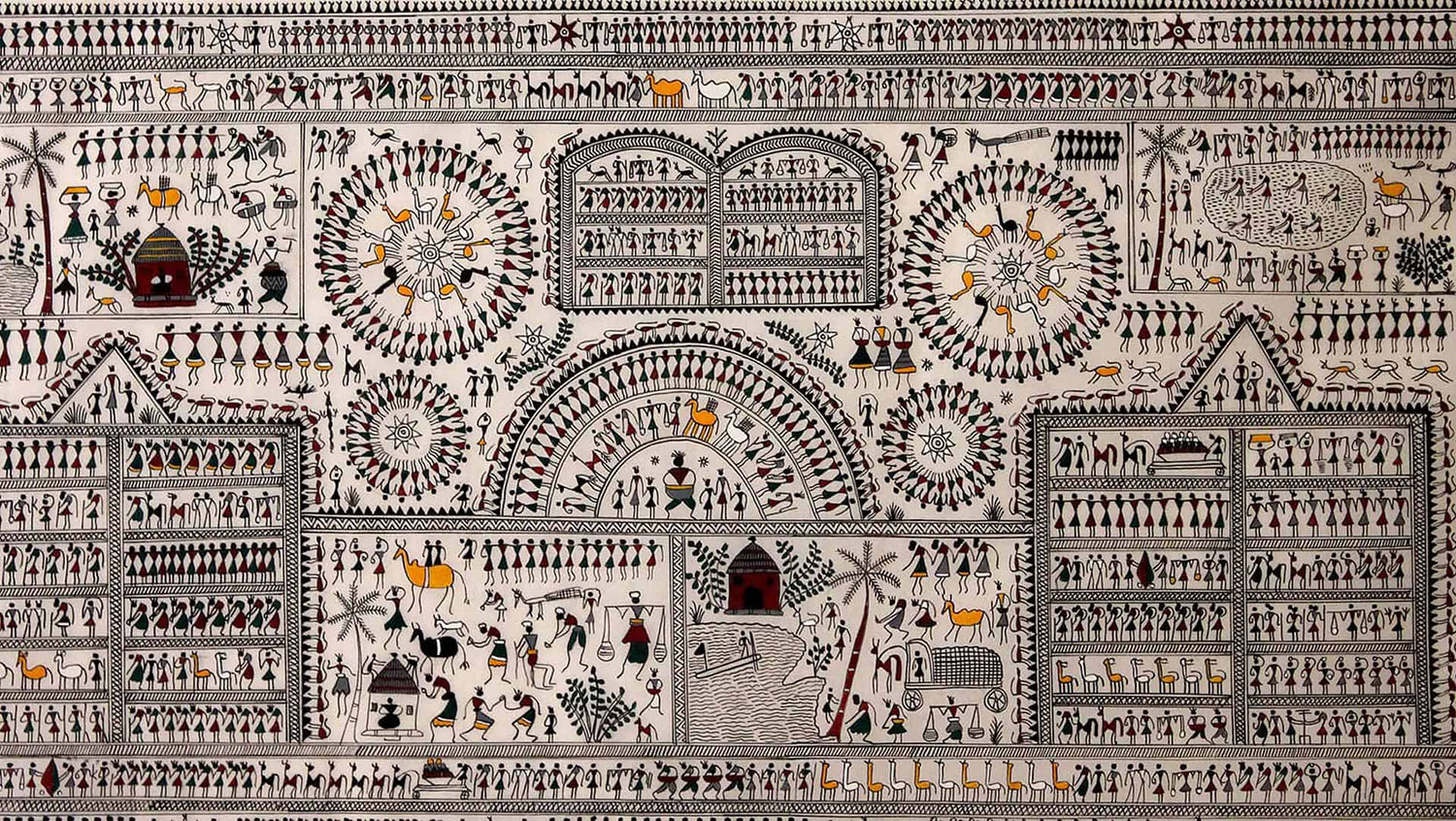ARTICLE
Saora Paintings
A mural painting tradition, Saora Painting is practised by the Saora community in the eastern Indian state of Odisha. Also called ittal or idital, these murals are imbued with religious and ritual significance through ceremonies held before and after the mural is painted.
The Saora community resides primarily in the south and south-eastern districts of Rayagadh, Koraput, Ganjam and Gajapati in Odisha, though smaller populations can also be found in the states of Andhra Pradesh, Madhya Pradesh, Jharkhand and Assam. In Odisha, the state government recognises twenty five Saora sub-groups. However, the community itself considers itself to have two primary sub-groups: the hill and the plain Saora, also known as Lanjia Saora and Sudha Saora respectively. Within different subgroups of the Saora people, these painted murals may also be known as anital or idsing.
According to anthropologist and historian Verrier Elwin, who studied the religion of the Saora community, an ittal represents the idea of a house for the various religious figures of the Saora pantheon. It is painted on the interior walls of a house – including the darkest corners – and, upon completion and consecration, functions as a shrine. An ittal might be painted for several reasons: to honour ancestors, to mark a festival, to ward off illnesses, to ease childbirth, to pray for a good harvest or to appease forest deities.
While some ittal are drawn on specific social and religious occasions, in the case of an illness, a family may approach the community shaman (kuranmaran), who may recommend the creation of an ittal in the house along with the sacrifice of a fowl. The householder may ask the kuranmaran or a specialist artist, known as ittalmar, to paint the mural. It is believed that if the ittalmar spends a night sleeping next to the wall chosen for the ittal, the deity will send instructions on what to paint through a dream.
A finished ittal is anywhere between 50 cm to 2 m in width and 45 cm to 1.5 m in length. The tools used by an ittalmar are all locally derived: the brush is typically a stick of bamboo or a twig with a splayed end. White, often the sole pigment used, is derived from rice flour or ashes mixed in water. The binder is made from tamarind gum. Black, blue, yellow and red may also occasionally be used. Black is sourced from lamps, or by burning a coconut shell, blue from indigo, yellow from turmeric and red from red ochre or geru.
On the wall, which has been washed with red ochre, the ittalmar first paints the outline and then fills in the details. This order, of creating the outline first, is followed for all patterns and motifs. Triangles – either one triangle or two joined at the apex – are used to denote human and animal forms, with the limbs depicted using lines. Dots are used to mark physical features such as eyes and breasts or used as decorative elements. Dots may also be used to depict physiological aspects of animals. Some symbols or figures are drawn with a double outline, and specific animal and nature motifs may symbolise specific deities. Depending on the reason behind its creation, an ittal may feature scenes depicting hunting and agricultural activities, childbirth, pregnancy, war, transport or festivities, to name a few. After the ittalmar has finished painting, the kuranmaran performs a ceremony and – acting as a medium between the deity being invoked and the painter – instructs the ittalmar to add more elements to the ittal. Once the deity is deemed to be satisfied and the accompanying sacrifice has been made, the ittal gains the status of a shrine. It is worshipped during festivals and retouched each year.
Saora paintings differ from Warli paintings in both function – as each is made for a specific deity or purpose – and composition. Except for the chawk, Warli paintings are rarely made within a demarcated outline, whereas for an ittal the first step involves painting the outline and the frame. The depiction of groups of people in a concentric form, as seen in Warli painting, is also absent in Saora painting, where groups of people are depicted in rows that run parallel.
Changes in socio-religious practices within the Saora community, as well as the displacement of the community due to developmental and infrastructure projects in the region, have led to a decline in traditional Saora painting. However, interventions by the state government and non-governmental organisations have helped the painting style gain a wider platform, with Saora motifs being used on a variety of products and media today.
Bibliography
Our website is currently undergoing maintenance and re-design, due to which we have had to take down some of our bibliographies. While these will be re-published shortly, you can request references for specific articles by writing to hellomapacademy@map-india.org.








